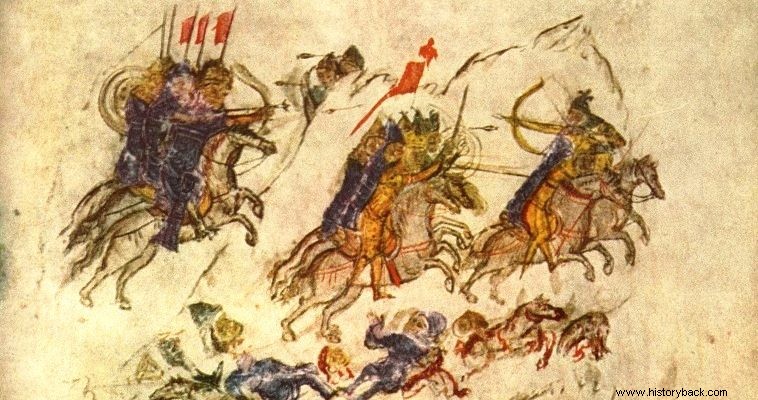
Veroia or Veroi was a Greek city, founded by King Philip II, the father of Alexander the Great. Today it is known as Stara Zagora and belongs to Bulgaria. Near the city, in 1122, the famous battle took place that wiped out the nation of Patsinaki from the list of peoples...
OF PANTELIS D. KARYKAS
The Pestenegos or Patsinakes were known to the Byzantines because of their raids on Byzantine lands. In 1118, the emperor Alexios I Komnenos swept them away, literally, in the battle of Levouni, at the mouth of the river Evros.
However, not all the tribes of the Patsinakis had participated in the invasion at that time. They, coming from the Russian steppe, crossed the Danube and invaded the imperial lands. Pachynakes passed through the lands of the Russian ruler of Kiev, Vladimir the Monomakh, with his permission.
This is presumed from the fact that most of the Patsinakes were in his service. The Patsinakes together with Ughuz Turks they started from Russia in 1121 and invaded the imperial territories. The new invasion caused concern in Constantinople and the new emperor, son and successor of Alexius, John II Komnenos, decided to confront them despite the fact that at that time he was fighting the Seljuk Turks in Asia Minor with great success.
The emperor crossed the Hellespont with his army. The Byzantine forces gathered in Constantinople. In the meantime the Patsinakes had crossed the Aimos and were moving south. Finally they camped at Veroe. The emperor attempted to solve the problem diplomatically. Ioannis pretended to want to negotiate while at the same time he was marching with his army against them. This conclusion is drawn from the course of events.
Epic Clash
When one morning the Byzantine Army appeared in front of their chariot-fortified camp, the Patsinakes were taken by surprise. Nevertheless, they caught up and developed in the plain there. The Patsinakes, like all Turks at that time, were basically horse archers.
They fought in loose order, charging, arching and retreating. Only when the opponent was sufficiently exhausted did they rush against him. They also had a few more heavily armed horsemen who were the nobles and guards of the chiefs. Their infantry was not remarkable. Composed of every man available to bear arms who could not ride.
There is no information available on the number of Patsinakis, nor on the composition and numerical strength of the Byzantine Army led by the emperor himself. The Byzantines rushed against the enemies but the Patsinakes and the Ughuz following their classic tactics overwhelmed them while whenever they were suffocatingly pressed, they fled to their fortified camp. In fact, an arrow wounded them in the leg and Ioannis. However, the warrior emperor did not cower.
Instead he ordered the elite Varangs of the guard to attack the enemy tanks. The latter marched with incredible courage even though they were receiving a barrage of missiles. With their spears they began to cut down the opposing carriages, ignoring the "fires" of the enemies.
Finally, under the cover of the other Byzantine forces, a passage was opened through which the Byzantines charged into the enemy camp, mercilessly slaughtering the opponents. Unable to maneuver the Asiatic horse archers were unable to defend themselves against their more heavily armed opponents and were slaughtered by the thousands. Those Patsinakes who survived were captured and some joined the Byzantine Army. After the battle of Verona, however, the national Pecheneg was never heard from again. It was a battle of extermination.
